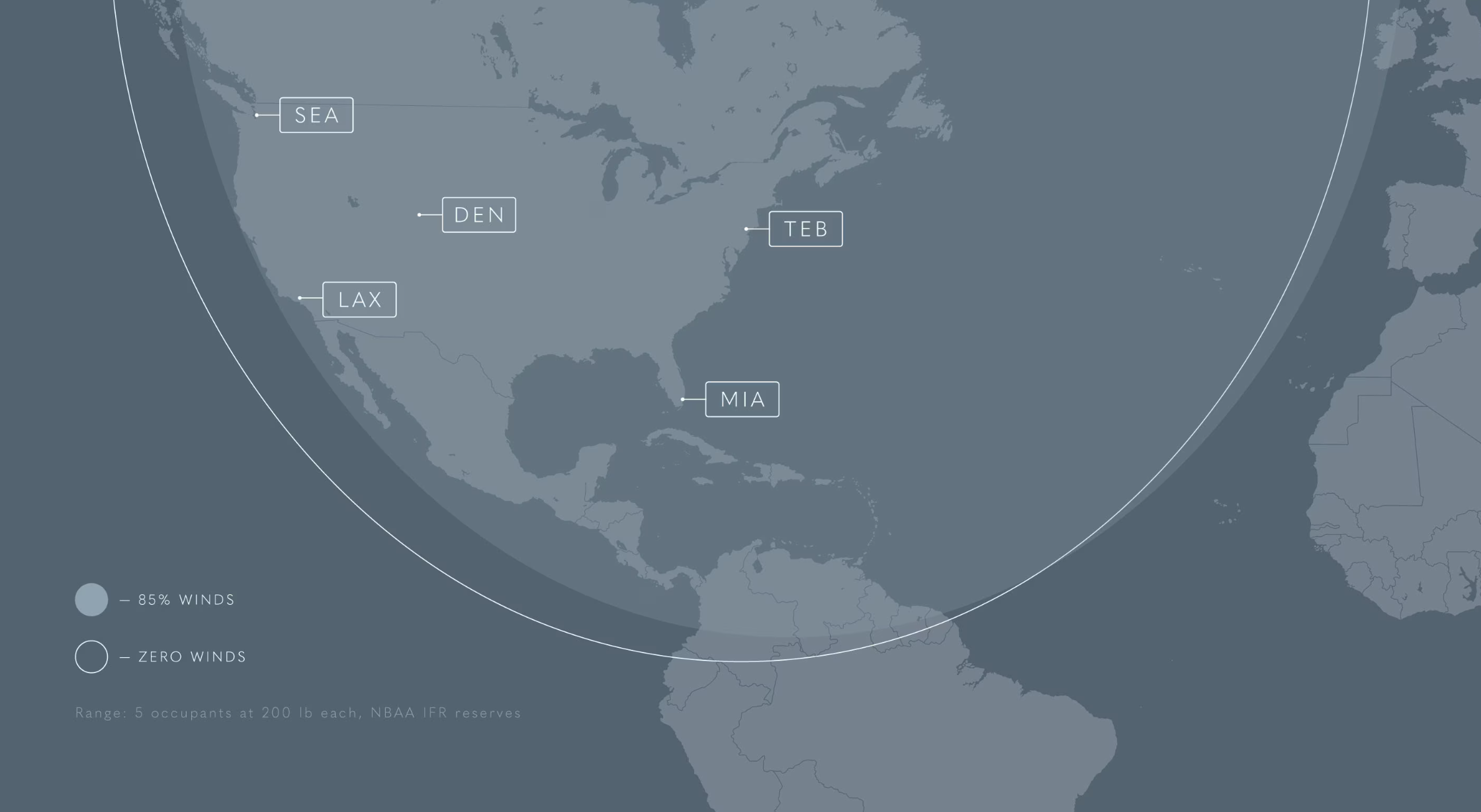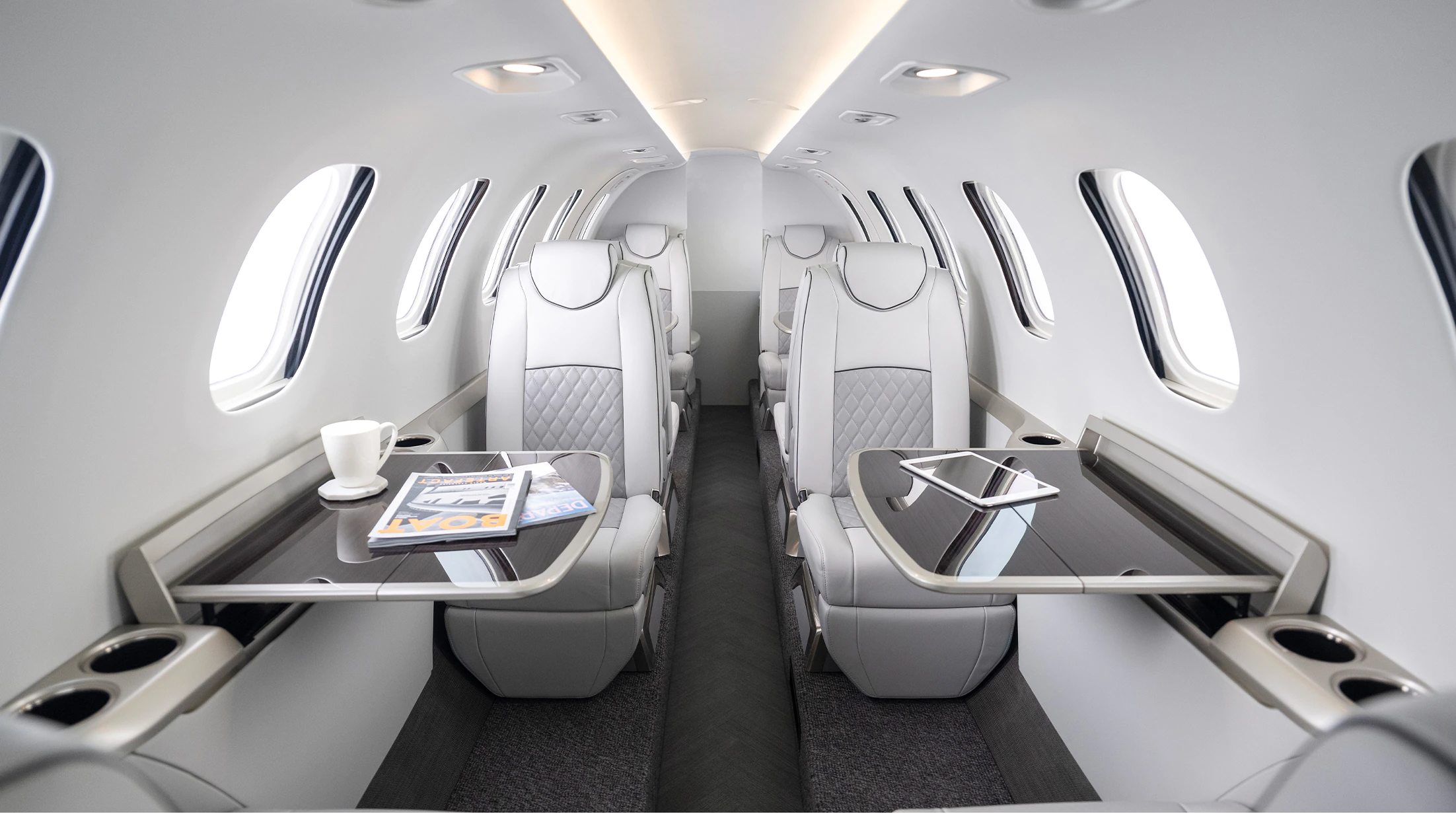Summary
- HondaJet Echelon has features unique in the light jet category, such as over-wing pylon-mounted engines.
- With a range of 2,675 NM, the Echelon travels farther than its closest light jet competitor, proving unmatched efficiency.
- An operating altitude of 47,000 ft sets the Echelon above competitors, increasing fuel efficiency.
Honda is better known for its automobiles. However, the company has been making waves in the aviation industry with its HondaJet family. It consists of the HondaJet, the HondaJet Elite, and the biggest and latest addition, the HondaJet Echelon (also known as the 2600).
Honda has made it a characteristic of the company to offer more than the competition can in terms of performance, which also rings true with the Echelon. The aircraft outperforms most competitors in one very important metric: range.
But let’s not rush. The HondaJet Echelon brings plenty of unique things to the light jet category.
Over-wing pylon-mounted engines
The feature might not be unique to the HondaJet family, but it is unique compared to the competition. The HondaJet Echelon is the only light jet with an over-the-wing engine mount (OTWEM). Before the first HondaJet, only one production aircraft with a similar OTWEM configuration was the failed VFW-Fokker 614.
But why did Honda choose this particular configuration for its aircraft? There are multiple reasons, but the main one is ground clearance. Every other low-wing jet manufacturer moves the engines to the back and mounts them on the rear fuselage.
A rear fuselage-mounted engine configuration robs the cabin of space because additional structural supports are needed. In addition, the proximity of the engines to the fuselage increases cabin noise. Moving the engines onto the wings solves these issues.
However, the typical OTWEM configuration isn’t without problems. The engine affects the aerodynamics of the wing and prevents the aircraft from traveling at high speeds, which is why Honda mounts theirs on pylons. It gives the engine and the wing clean, turbulence-free airflow.
Better than the competition
The Echelon is the world’s first transcontinental light business jet. The aircraft’s range with four passengers and a single pilot, including NBAA IFR reserves, is a whopping 2,675 NM (4,862 km). The range allows it to fly from coast to coast in the US, a massive selling point for the aircraft.
Photo: HondaJet
While comfort and luxury are vital areas customers pay attention to when buying a business jet, most do so to save time. According to Honda, the Echelon can fly 600 NM (1,111 km) more than its closest light jet competitor. The range resembles heavier and larger mid-sized business jets more than light jets.
Here are some of the HondaJet Echelon’s competitors:
- Cessna CJ4 Gen 2.
- Embraer Phenom 300E.
- Pilatus PC-24.
Related
First Transcontinental Light Business Jet: A Look At The HondaJet 2600
Boasting an exceptional range and industry-leading service ceiling, the HondaJet 2600 Concept is set to be a game-changer.
The HondaJet is powered by two Williams International FJ44-4C turbofan engines, which produce 3,450 lbf (15.34 kN) of thrust per engine. It is the most powerful aircraft in the HondaJet lineup. It was also one of the smallest engines until very light jets (VLJs) became popular.
The engine can produce 3,600 lbf (16 kN) of thrust but has been slightly derated to increase lifespan and efficiency. Honda claims the Echelon is 20% more efficient than its light jet competitors and 40% more efficient than mid-size jets.
Photo: HondaJet
Details about the Williams FJ44 turbofan engine:
- Initially introduced in 1992.
- It delivers fuel using a unique rotating fuel nozzle rather than the standard vaporizers.
- The model used on the HondaJet 2600 is the largest in the lineup.
The aircraft’s all-composite build helps reduce weight, which further improves efficiency. The design is also optimized to reduce drag. Honda developed its new wings for use on the original HA-420, which it calls Natural Laminar Flow Wings, and a low drag nose. The combination helps keep the airflow over the aircraft attached longer, reducing lift-induced drag.
The 2600 features the highest operating altitude of any light jet
Another metric in which the Echelon outperforms its competitors is its operating altitude. The aircraft can reach an altitude of 47,000 ft (14,326 m), 2,000 ft (610 m) more than its closest competitor.
The benefits of a higher service ceiling include:
- Higher cruise altitude.
- Increased fuel efficiency.
- Less turbulence.
Common-type rating with the HA-420?
The HondaJet Echelon is considered a clean-sheet design. However, the two have enough similarities for the Federal Aviation Administration (FAA) and European Union Aviation Safety Agency (EASA) certification bodies to issue a common type rating for the aircraft.
Photo: HondaJet
The design, control characteristics, and the cockpit interface are similar. Honda hopes that the aircraft will receive a common type rating, allowing pilots to seamlessly switch between all the aircraft in Honda’s lineup with little training.
HondaJet Echelon Specifications
| Exterior Dimensions | |
| Height | 14 ft 10 in (4.54 m) |
| Length | 42 ft 7 in (12.99 m) |
| Wing Span | 39 ft 9 in (12.12 m) |
| Cabin Dimensions | |
| Cabin Height | 4 ft 10 in (1.47 m) |
| Cabin Width | 5 ft (1.52 m) |
| Cabin Length (excluding cockpit & baggage) | 17 ft 9 in (5.43 m) |
| Total Baggage Volume | 120 ft³ (3.40 m³) |
| Weights | |
| Maximum Takeoff Weight | 17,500 lbs (7,938 kg) |
| Performance | |
| Range (4 pax, 1 crew, NBAA IFR reserves) | 2,675 NM (4,862 km) |
| Maximum Cruise Speed | 422 KTAS (782 kmph) |
| Maximum Certified Altitude | 47,000 ft (14,326 m) |
| Takeoff Distance (MTOW, SL, ISA) | 3,300 ft (1,006 m) |
| Landing Distance (6 pax, 2 Crew, NBAA IFR Reserves) | 2,500 ft (762 m) |
| Thrust per Engine | 3,450 lbf (15.34 kN) |
| Occupancy | |
| Crew | 1 – 2 |
| Passengers | 9 – 10 |
| Systems | |
| Engine | Williams International FJ44-4C Turbofan Engines |
| Avionics | Garmin 3000-based System |
| Technology | Garmin Autothrottles with Autoland Emergency Control System Advanced Steering Augmentation System (ASAS) Runway Overrun Awareness and Alerting System (ROAAS) Auto brake for takeoff and landing |

Related
Most Recent HondaJet: A Guide To The HondaJet Elite II
The type was first introduced in late 2022.




